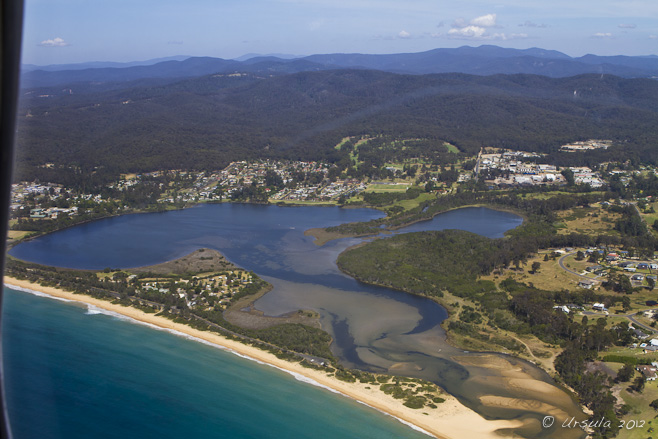
Looking across Aislings Beach and Lake Curalo to the Great Dividing Range, NSW
Nothing can beat a scenic flight over interesting terrain on a clear, sunny day.
We knew we were in for a treat when the skies over our patch of the Australian coast turned pink on the eve of a coastal flight we had booked in a small aircraft. For it is generally true that a red sky at night, with the setting sun sending its rays into a stable high pressure system from the west, indicates good weather is on the way.
And it was indeed a perfect day for flying.
We met our Piper Cherokee Six – and its owner, veteran pilot, Andy – at the small coastal airport of Merimbula. Once we’d had our safety briefing and strapped on our life jackets, we were up and away; off on one of Merimbula Air Services‘ “Gabo Island Adventures”.
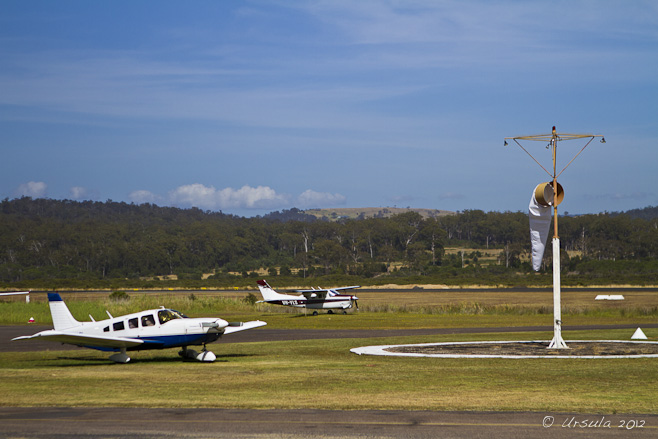
Our Piper Cherokee awaits.
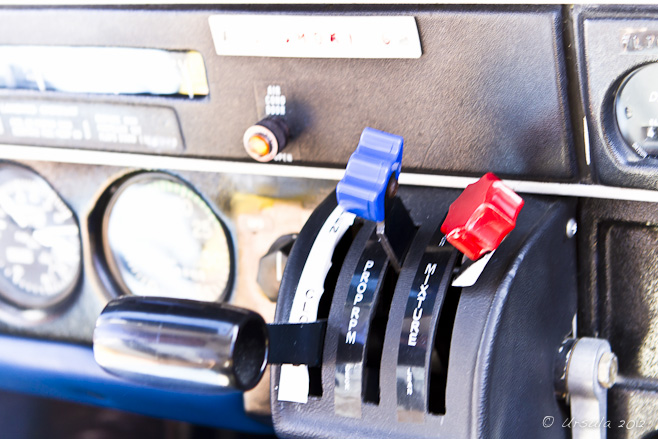
It's all under control.

Our regular lunch spot on Eden Wharf looks so different from the air!

The Tasman Sea crashes onto the red bluffs of the aptly named Disaster Bay, NSW. The City of Sydney (1853-1862) was the first of many ships to be lost in the strong seas common in this area.

The sand dunes and forests of Nadgee Nature Reserve straddle the border between New South Wales and VIctoria, and mark the end of the Bass Strait and the start of the Tasman Sea.

Gabo Island, with its lighthouse and grass landing-strip, comes into range.

The Gabo Lighthouse keeps watch over the ships and the weather on the Tasman Sea.
The first lighthouse was started on the current site in 1847, but the project quickly ran out of money and was abandoned until after the loss 30 lives in 1853, when the steamship Monumental City was wrecked on nearby Tullaberga Island. The current tower is Australia’s second tallest: 47 metres high and 55 meters above sea level. The lighthouse and surrounding fences and are built from beautiful red porphyritic granite quarried on the island itself. Buttresses were added to the fences following a freak wave in 1895 which washed over the island, damaging property.

Grass tussocks huddle in the lee of the buttressed red granite wall.
The island used to house three families: two light-keepers and a weather technician, but of course modern times demand less people-power. Today, there is always a live-in “caretaker”, and one of the other homes is available to recreational visitors or scientists who come to conduct studies. At the moment, two young scientists are in residence: one studying the feral rats who have come on to the island from ships, and the other studying the 30,000 strong colony of Little Penguins who come ashore to burrow every night.

Lighthouse-keeper's house: now the caretakers' accommodation and museum.

Scientist in Residence

Two-hundred and forty steps, all constructed in Manchester, England, lead up to the light.

Caretaker's accommodation from the top of the lighthouse.

Little Gabo Island hosts numerous pied cormorants.

Three visiting children, looking very small from the top of the lighthouse, race across the granite.

Exhibits in the old smithy.

Our pilot Andy sits at ease in the weather station as he talks about the island history.

Looks good, but don't touch! Yellow fungus on old asbestos roofing.
The island has its share of sad stories. As I said earlier, the lighthouse wasn’t completed until 30 lives were lost to a ship wreck in 1853. The governments of the neighbouring states later erected a monument in memorial. Up an overgrown, road there is a small cemetery with three headstone: for two infants who died in 1861, possibly from a contagious illness, and for a young woman who died later the same year in childbirth. As recently as 1929, a lighthouse-keeper’s wife died as a consequence of a fall when medical attention couldn’t be accessed promptly due to rough seas.

Memorial to those lost at sea in 1853 when the "Monumental City" went down.

Blackberries ~ almost in season.

Rail ties on the disused road to the old quarry.

Evidence of life: A bicycle and some sort of scientific paraphernalia sit at the side of the path.

Cows keep the island grass under control.

The old quarry and the impossibly-blue Santa Barbara Bay.

A pile of Gabo granite at the abandoned quarry. In the past, the granite was used in a number of Australian public buildings.

Rubbed smooth by wave action, the pink granite sits in the sapphire waters of the bay.

Santa Barbara Bay is a popular destination for Victorians coming from the mainland to picnic, swim and snorkel.

Time to return home ~ our Cherokee awaits.

Turquoise waters mark the 500 meter wide channel between Gabo Island and the mainland.

Pambula Lake is the last major sight before landing back at Merimbula Airport.

Mid-afternoon, we touched down gently back at Merimbula Airport. Merimbula Air Services call this trip: “A great day out!”, and indeed it was.
Photos: January 25, 2012


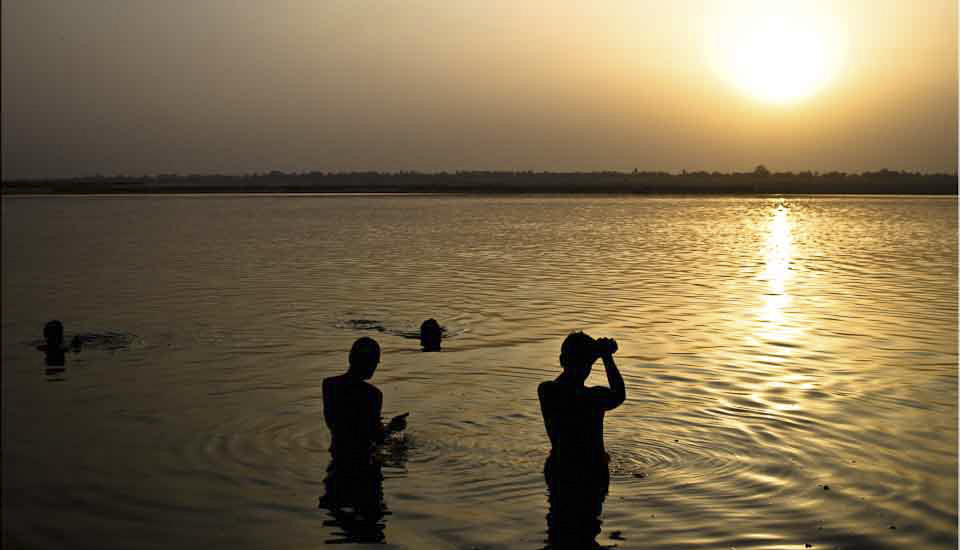






























.png)

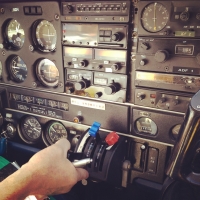
Such an amazing place, we didn’t do a flight however took one of the many cruises around the different bays and revelled in the history and marine life that surrounds Eden and the area generally. From the air it is quite magnificent!
Hi, Signe,
We haven’t had time to appreciate the area, really – haven’t even been to see Old Tom! But, one day at a time, right? x
wunderschöne Foto’s, ich wünsche Dir noch eine interessante Zeit in Australien
Hi Dietmut,
Nice to have your visit! I’m always glad to be able to understand a little German, even if I can’t speak it. 😉
We will, indeed have an interesting time in Australia. It is a fascinating place and provides me with new challenge photographically!
I see you have been in Hamburg recently: one of my favourite German cities.
Viel Glück! 🙂
Looking for any info on Gabo Island Lighthouse Keepers
William Henry Owen and His Wife Christina Eleanor (Ellen)back in 1913 to 1918 especially any photos or history.
Regards
Robert Hoglund
Donvale, Vic
Hi Robert,
Thanks for your visit to my Travel Blog.
Our trip to Gabo Island was five years ago; I don’t remember the names of the people who’s stories are illustrated in the little museum. The island is managed by the Parks Victoria – may I suggest you contact them?
(http://parkweb.vic.gov.au/explore/parks/gabo-island-lighthouse-reserve)
Cheers, Ursula
[…] For the backstory, please visit my PhotoBlog: https://www.ursulasweeklywanders.com/aviation/red-sky-at-night-sa… […]